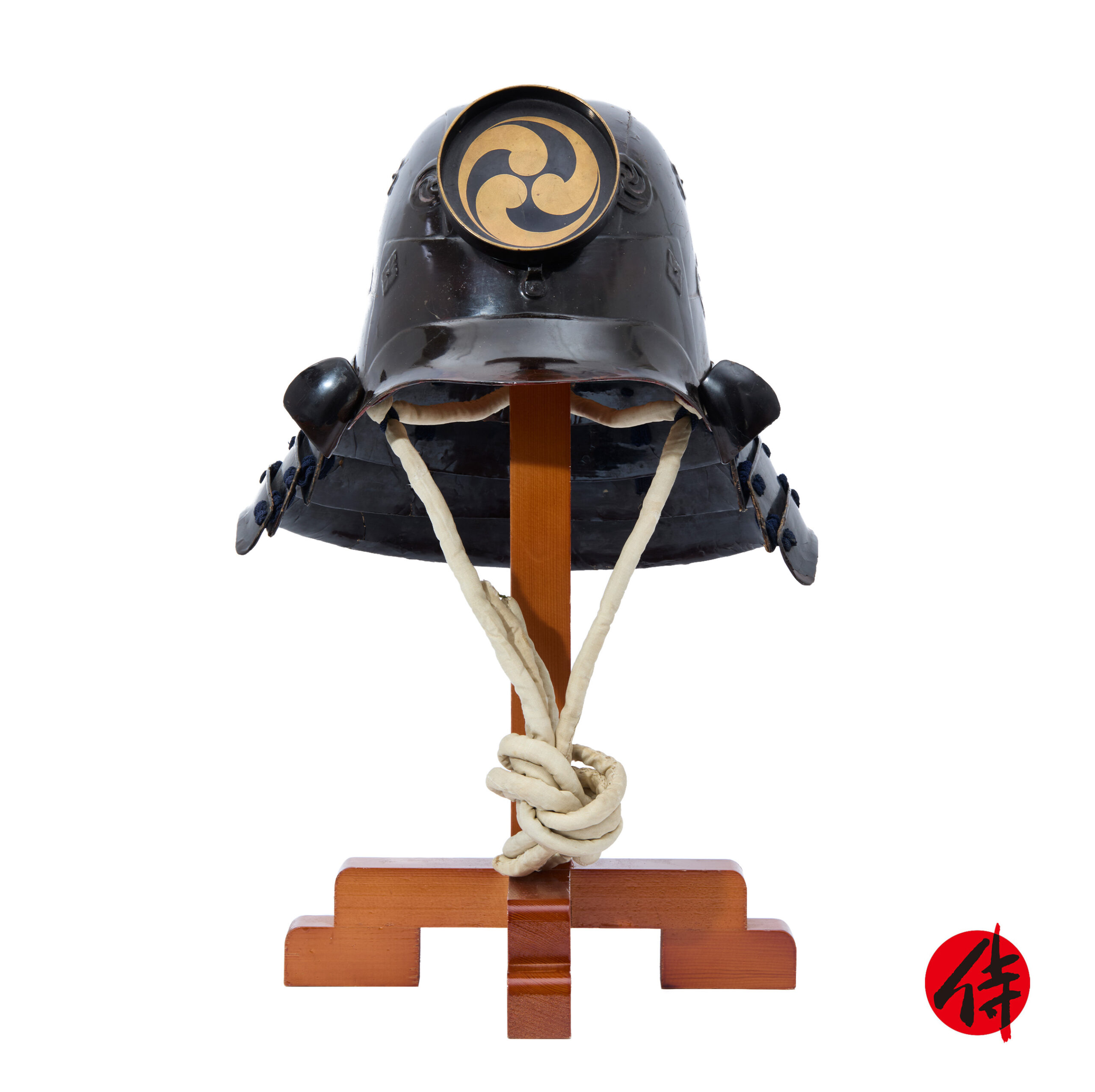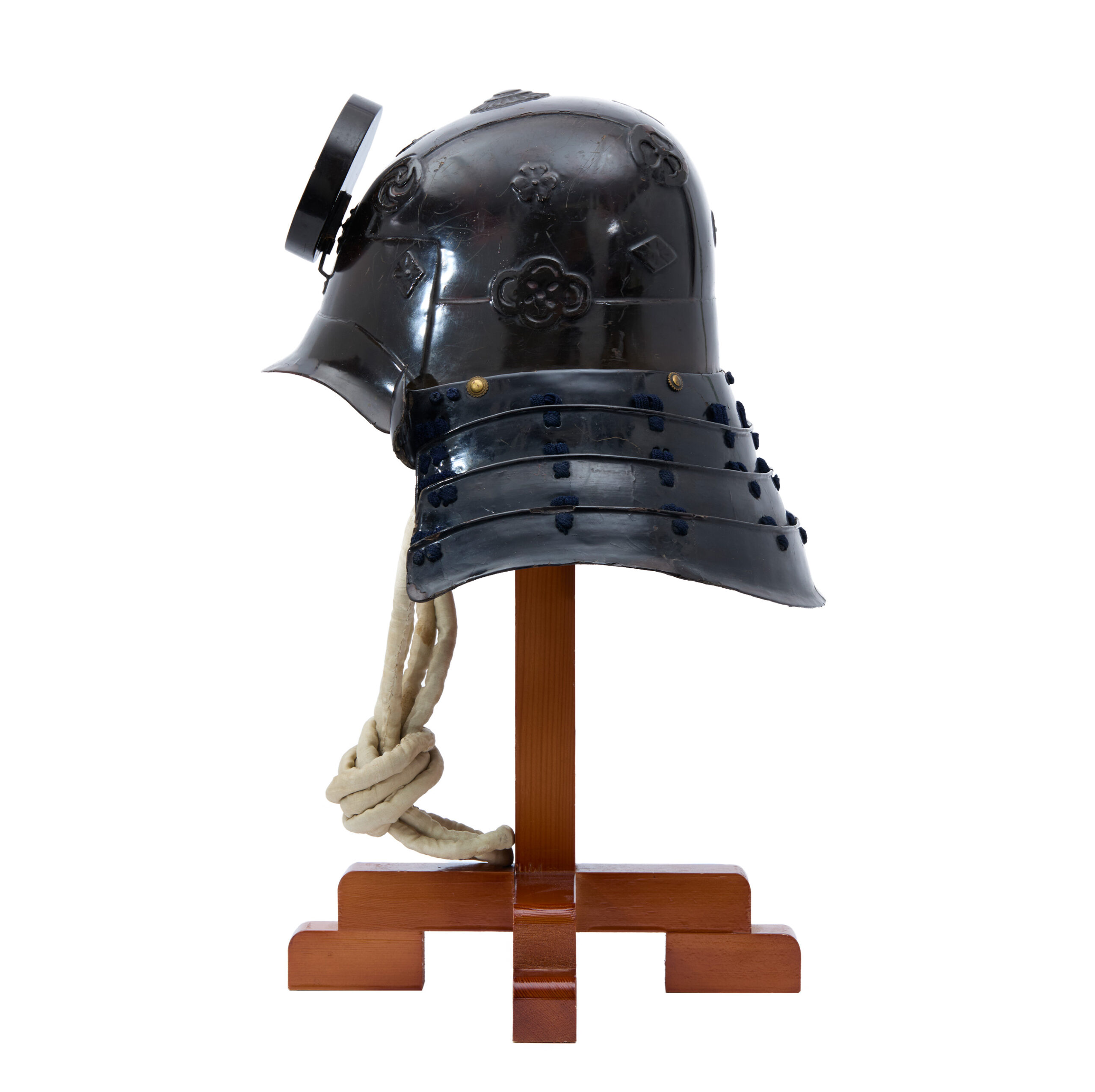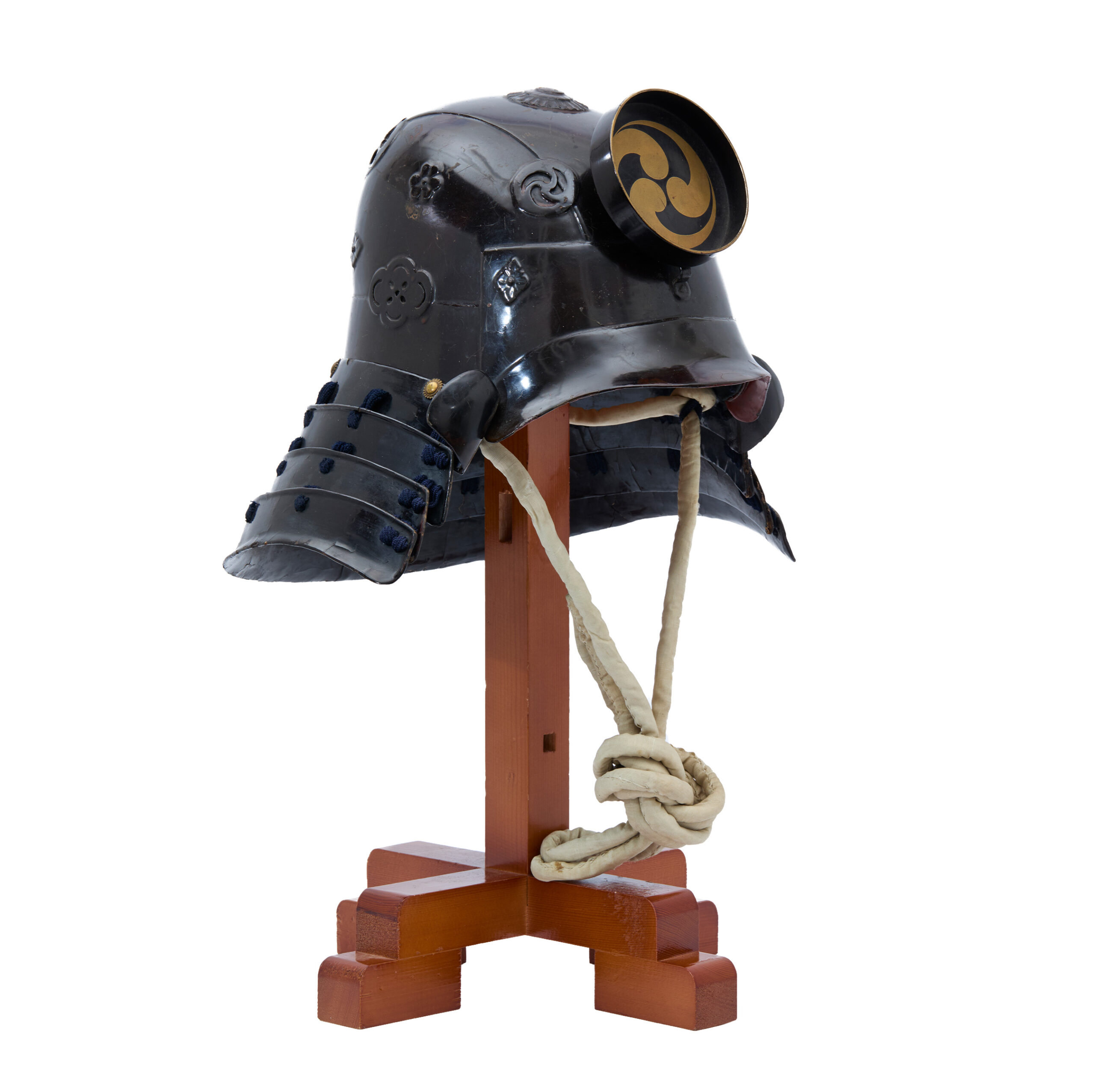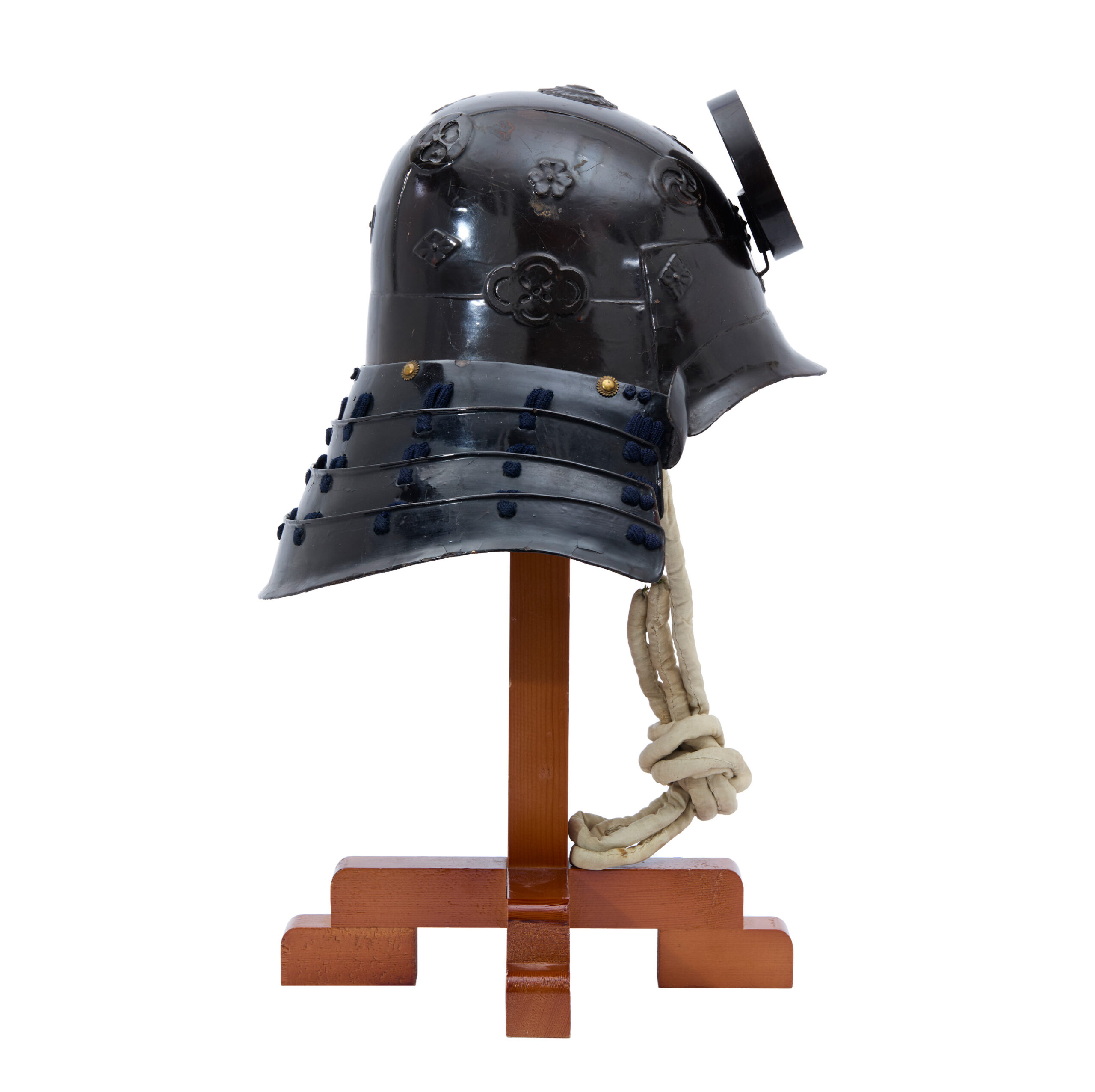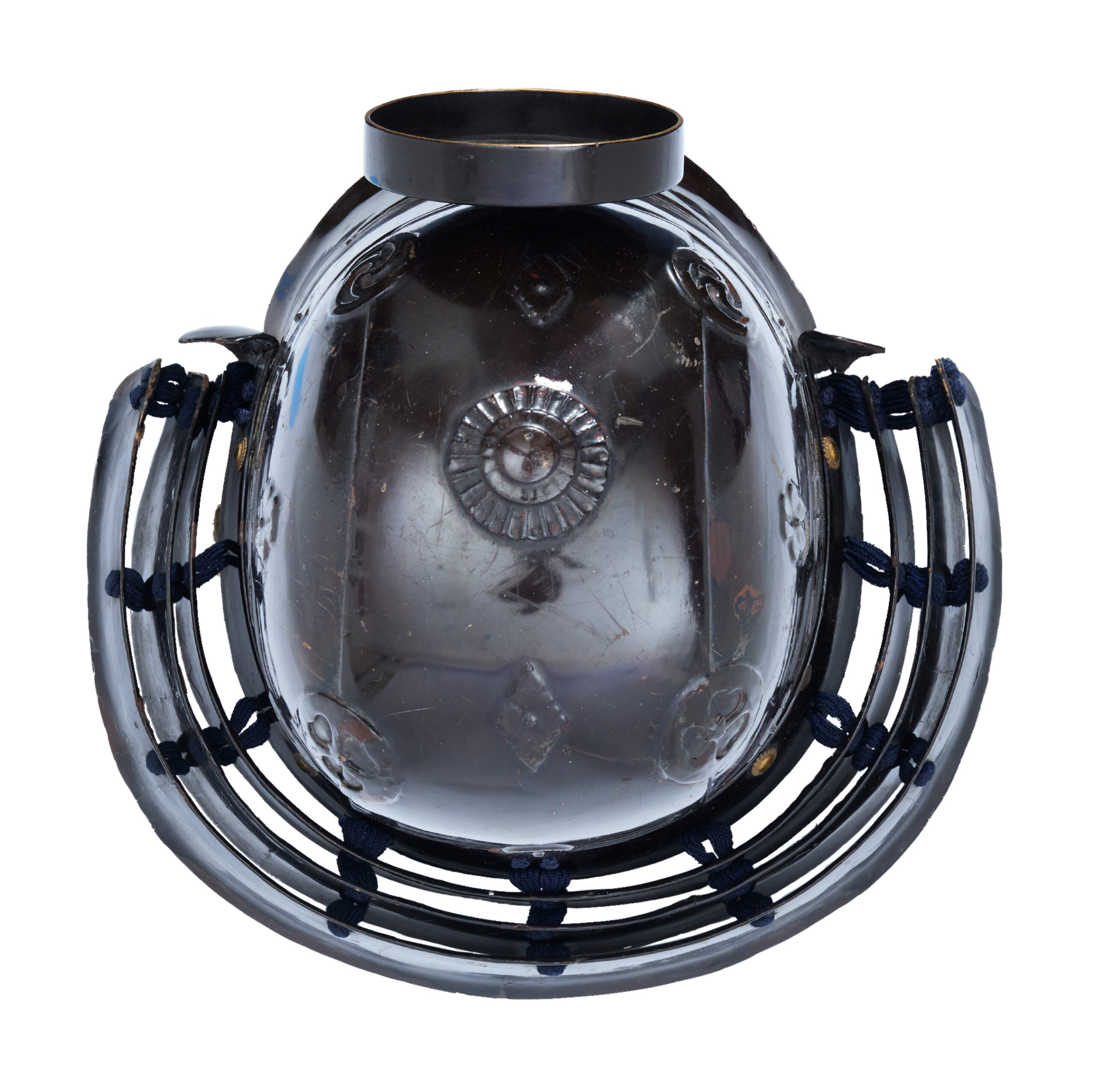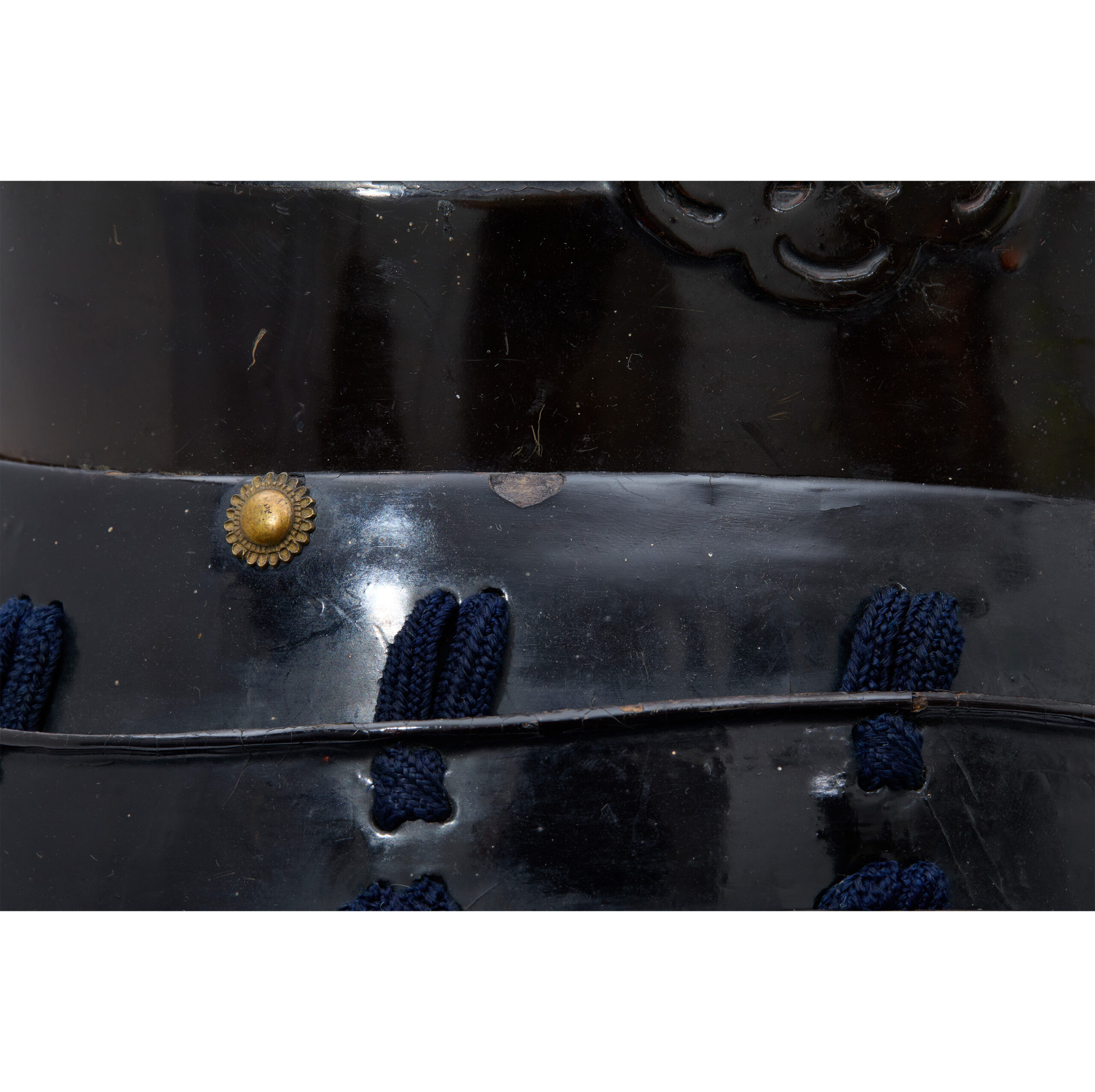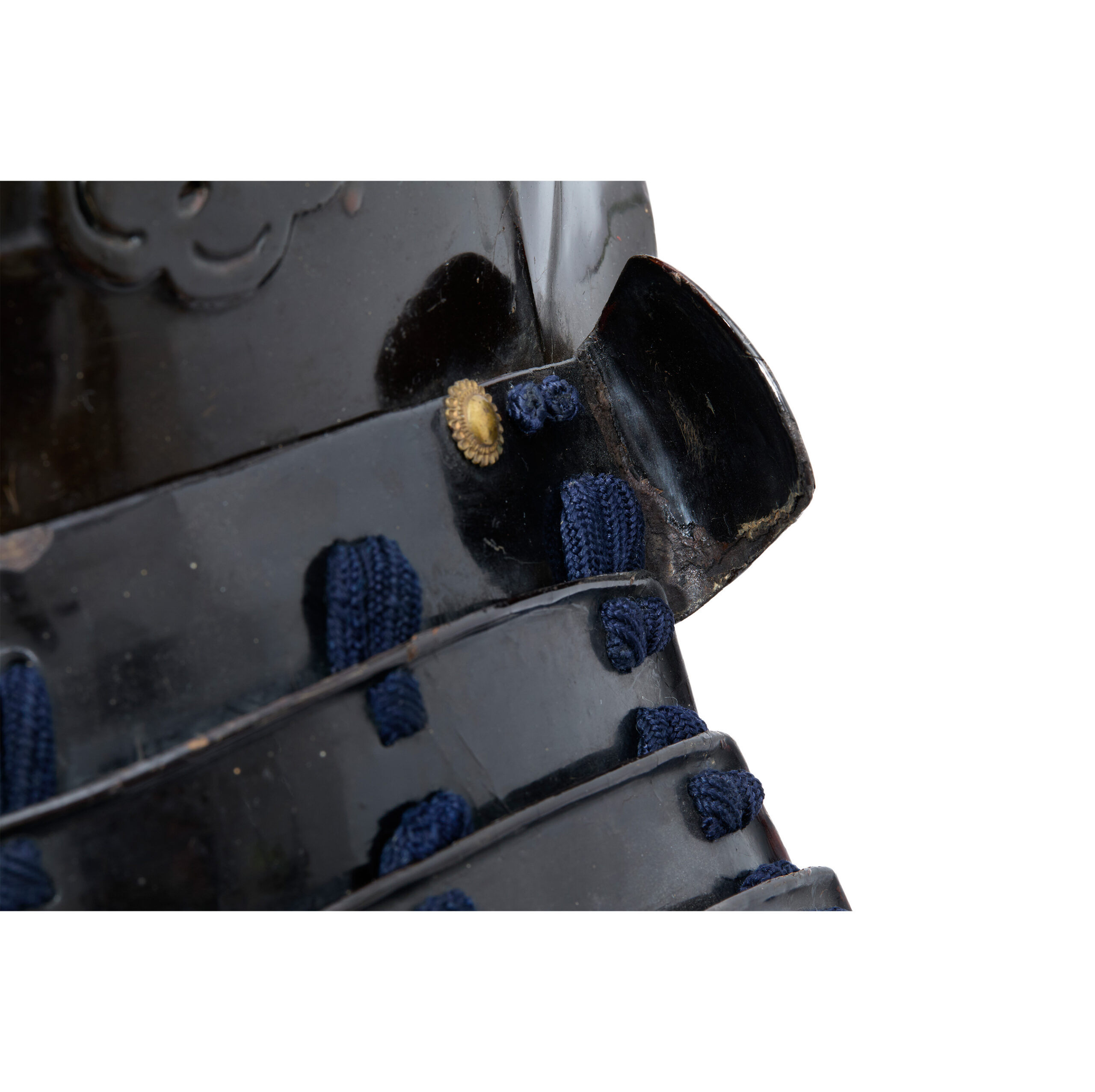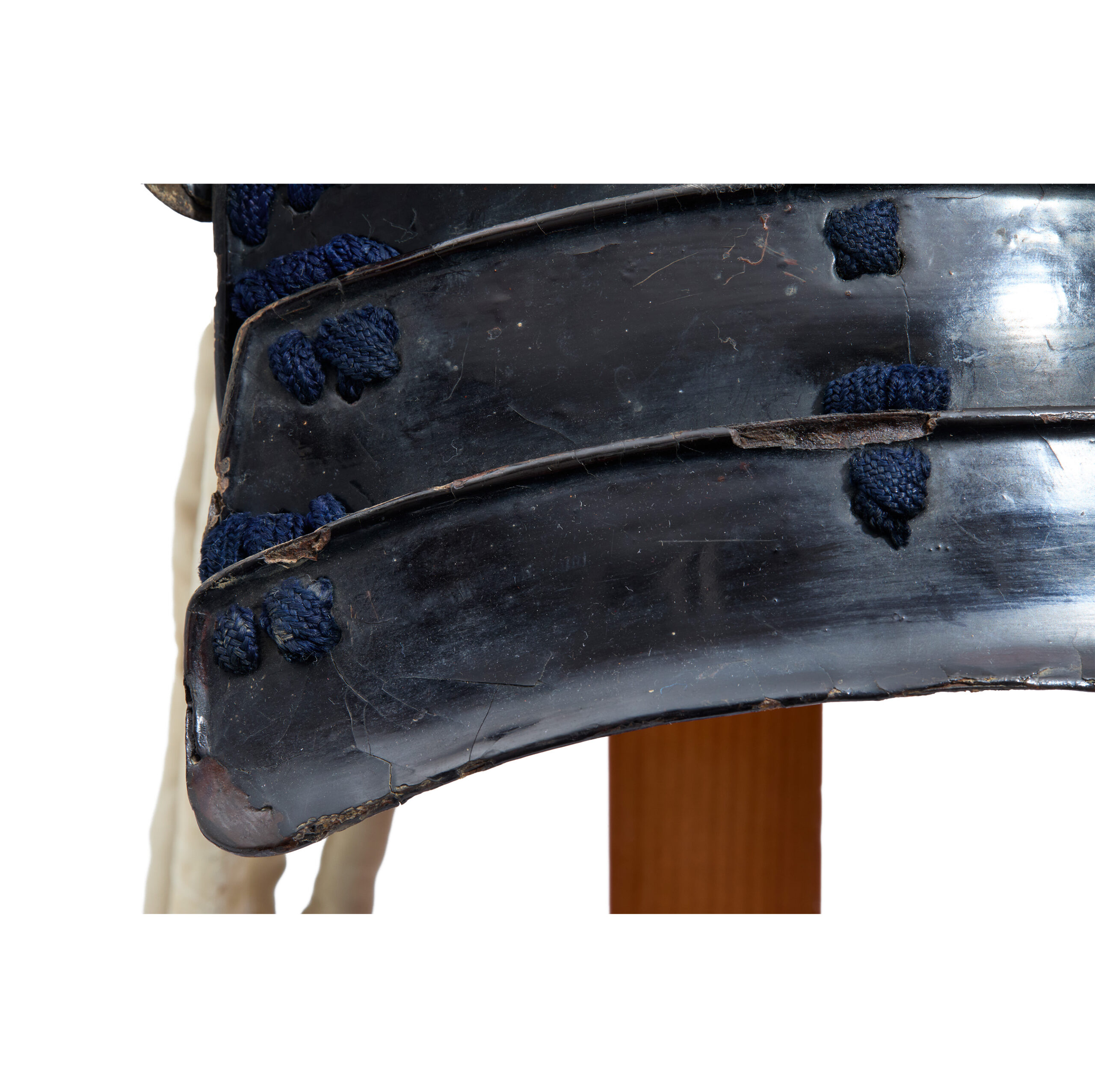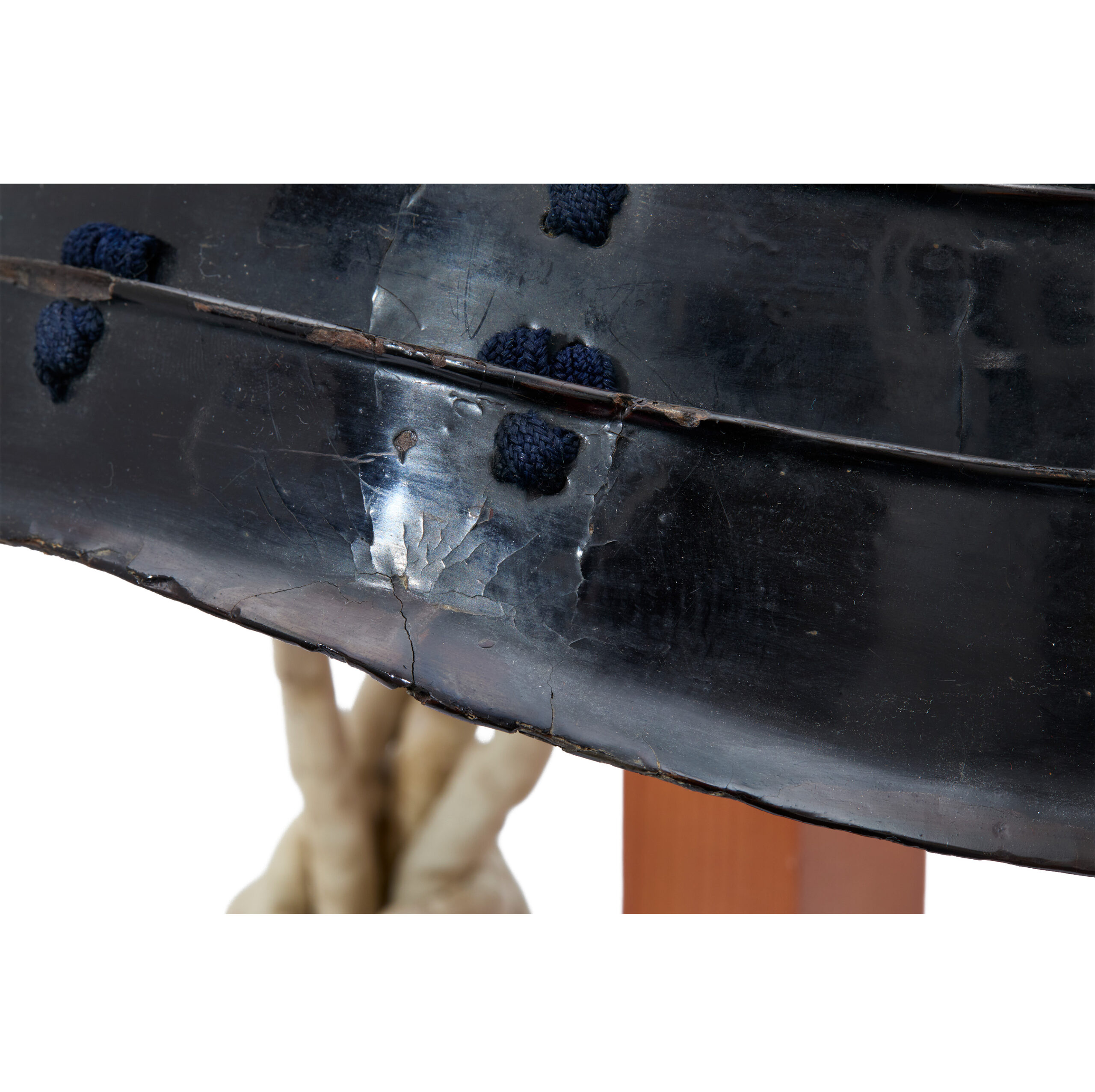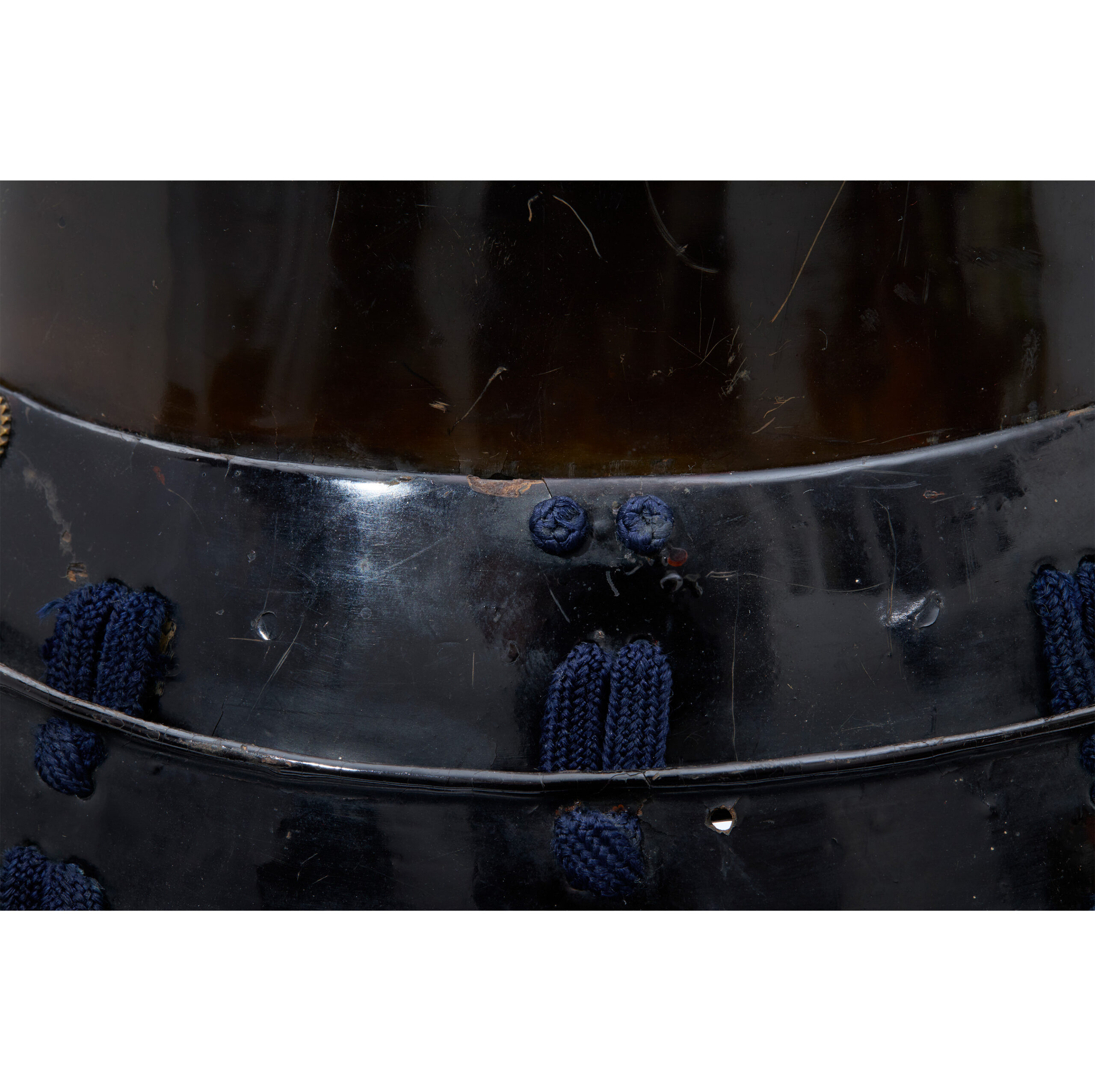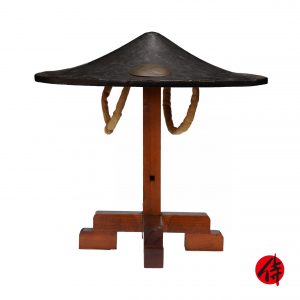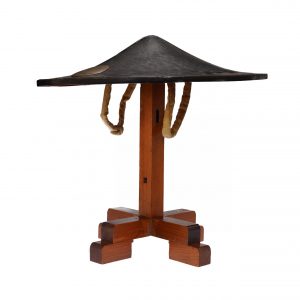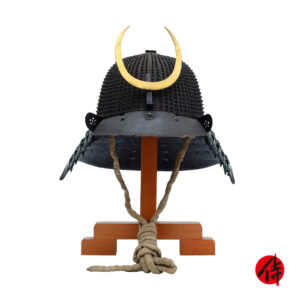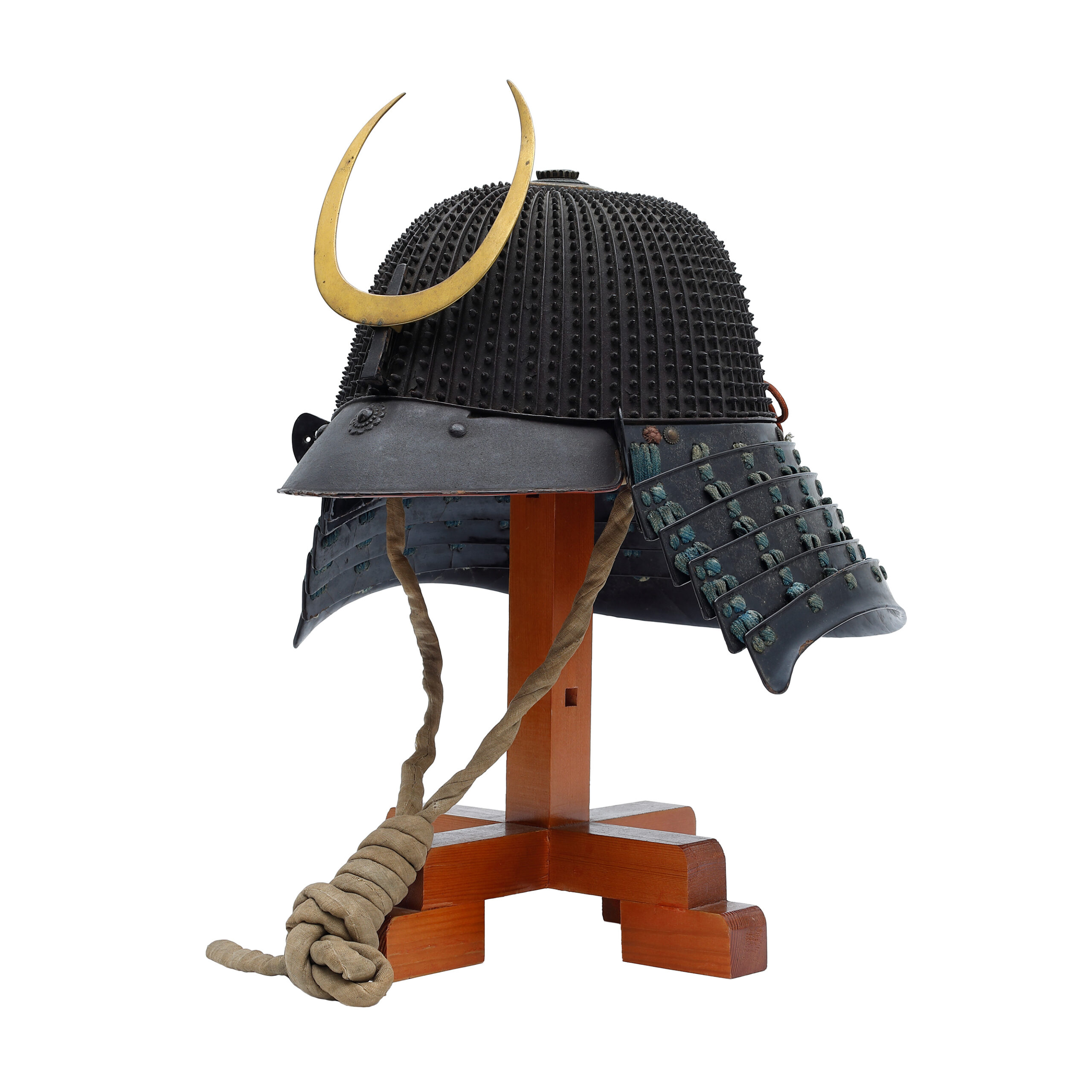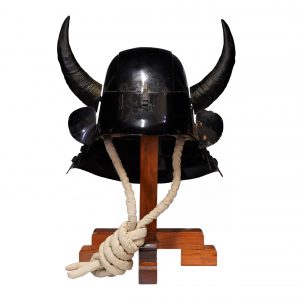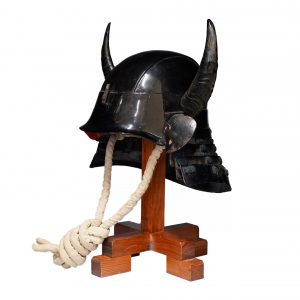Antique Samurai Helmet Early Edo Period Zu Nari Kabuto with Tokubetsu Kicho Shiryo Certificate
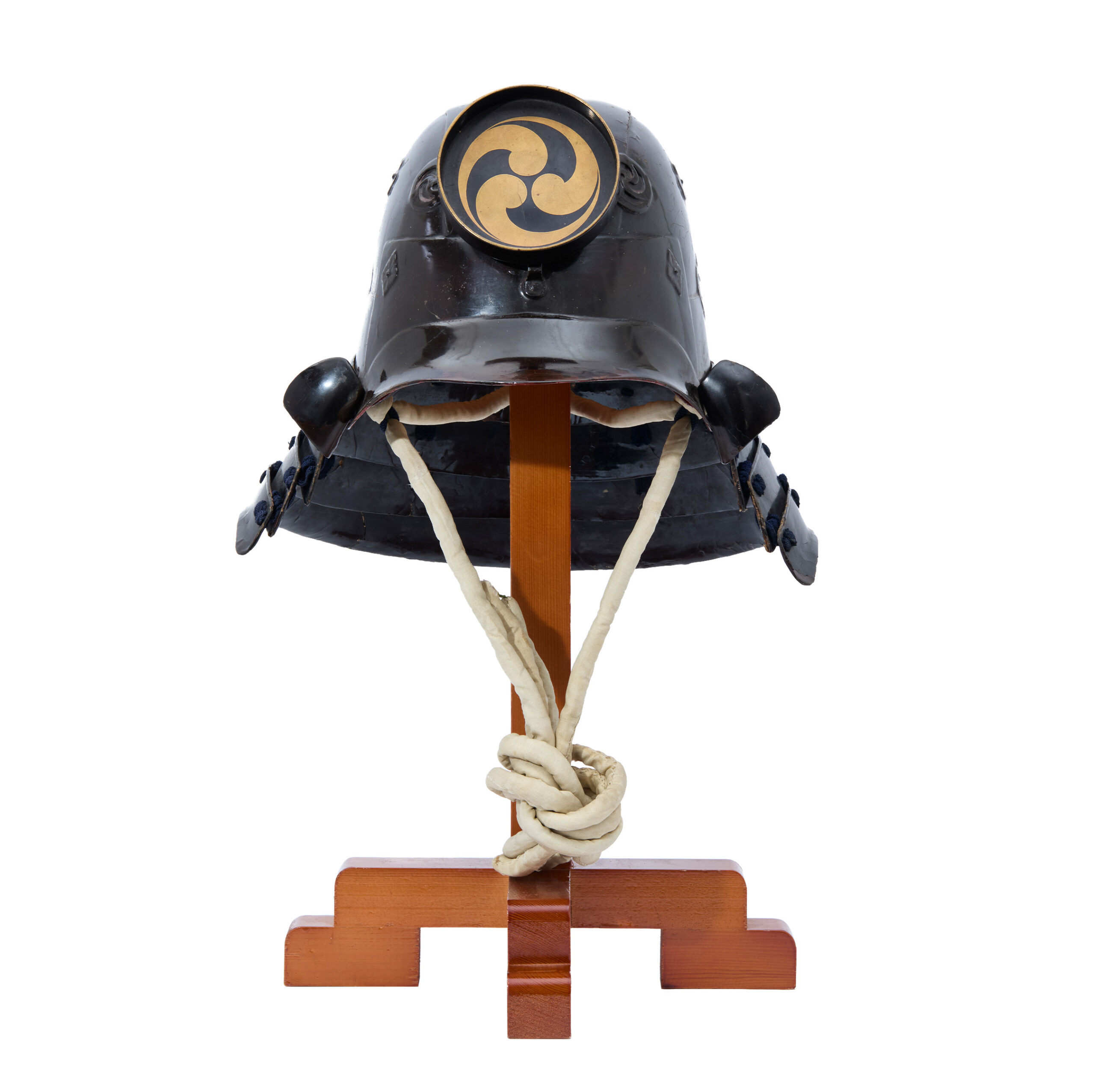
Period: Early Edo Period (appraised by The Association for the Research and Preservation of Japanese Helmets and Armor)
Prime Material: Iron
This Kabuto is categorized as a type of Nari Kabuto (形兜) or Zunari Kabuto (頭形兜). Zunari Kabutos are usually made up of five plates glued together, but exceptions are made from a single plate hammered out. Speaking of Kawari Kabuto, it generally refers to Nari Kabuto. The character 形 means shape in Japanese. That is, each Nari Kabuto has a design that expresses the shape of motifs related to various animals, plants, or gods. There are two methods for making Nari Kabutos. One is Harikake (張懸), and another is Tetsu-Uchidashi (鉄打ち出し). Harikake is a technique in which multiple layers of paper are pasted on the model. After drying, the model will be removed and hardened with lacquer to create a modeled object with the same shape as the model. Tetsu-Uchidashi is a style of sculpting an object by hammering out an iron plate. This Kabuto is made of iron.
The Kabuto (兜, helmet) is a protector for the head. When people started using the Kabuto, it was initially designed for practical use. However, the principal purpose of its design has changed with time; Samurais tried to express their dignity, personality, or religion by wearing the characteristic design Kabutos. According to a theory, these unique designed Kabutos were made from the late Muromachi period to the Edo period. This type of Kabuto is categorized as the Kawari Kabuto (変わり兜), and a variety of materials were used to create them. For example, animal fur, seashells, plants, and papers were used as materials for decoration.
Before the Kawari Kabuto’s production, the Suji Kabuto (筋兜) has appeared during the Nanbokuchou (南北朝, 1337-1392) period. At that time, the tactic was gradually changed from the piggyback fight style to battle with the Tachi (太刀) sword and the Naginata (薙刀, Japanese halberd) on the ground. Therefore, there was a rise in demand for the weight saving of the Kabuto. Also, in order to turn the attack by swords, a new type of structure was invented; it is the Suji Kabuto (筋兜). Its form slides swords’ attacks when weapons hit the Kabuto. It is said that the production of the Suji Kabuto prospered in the Muromachi (室町, 1336-1573) period. The Suji Kabuto production continued in the Edo period also; however, iron plates that Kabuto makers used at that time were thicker than the Muromachi period’s Suji Kabuto. Therefore, it was heavier, and we understand that then people cherished the Suji Kabuto to enjoy the old-style Kabuto, not to wear it on the battlefields.
This particular helmet is finished in Tetsu-kuro Urushi-nuri (鉄黒漆塗), meaning “iron-black lacquer coating.” This traditional technique involves applying a layer of black lacquer over the iron surface. It serves both practical and aesthetic purposes—protecting the metal from rust while also giving the helmet a subdued, elegant appearance. The deep black sheen of the lacquer enhances the bold form of the helmet, conveying the samurai ideal of quiet strength and refined dignity.
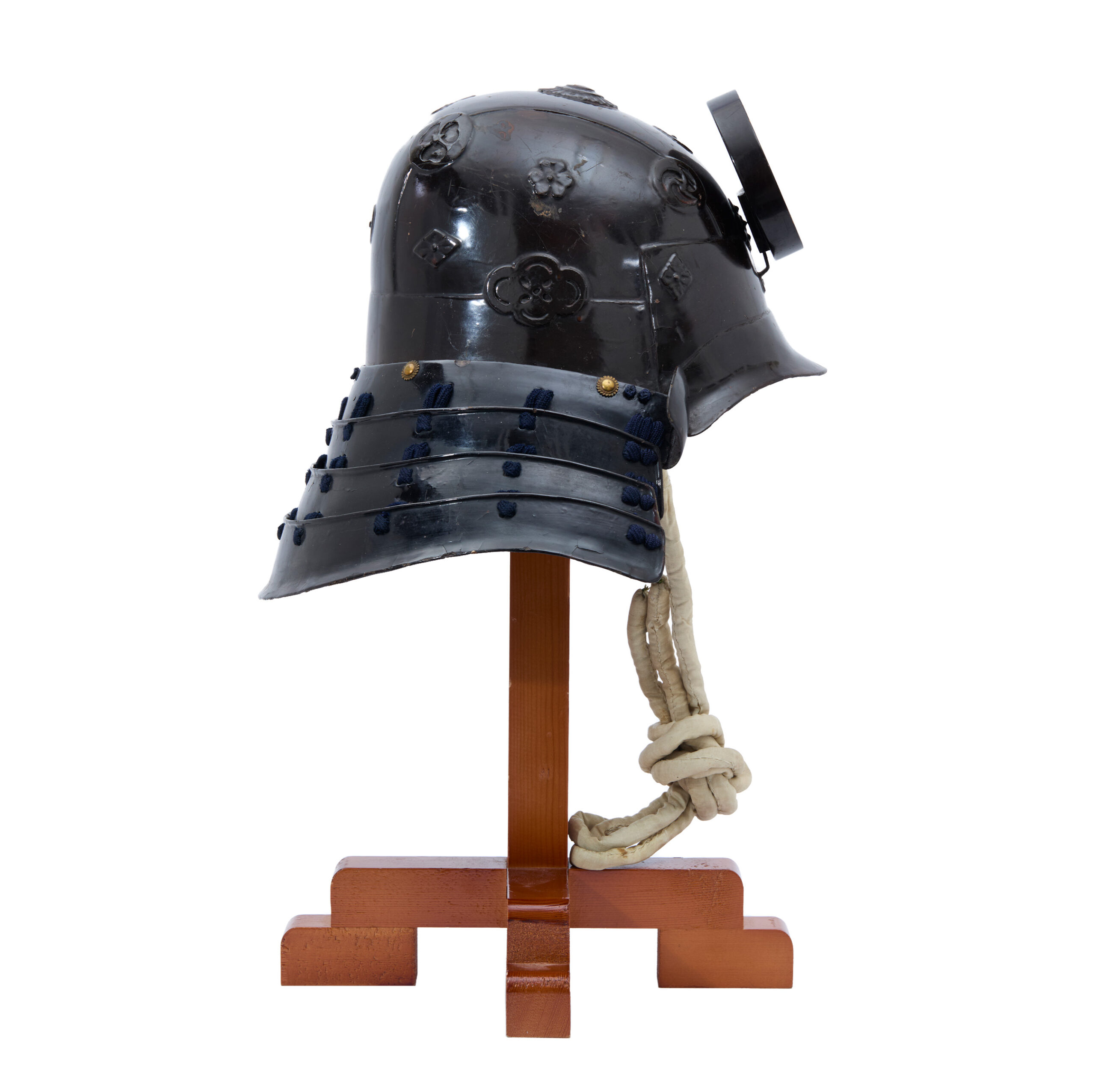
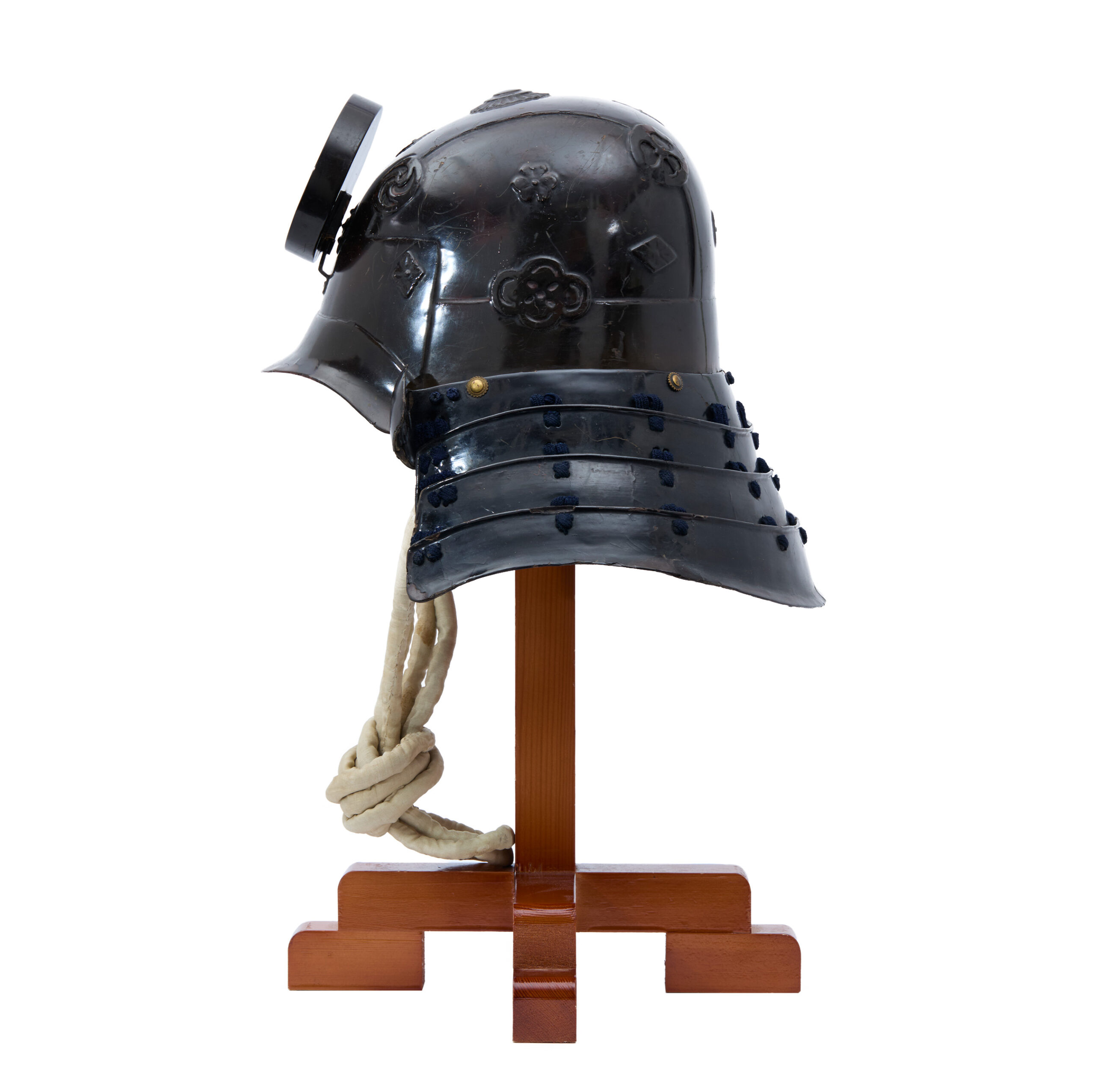

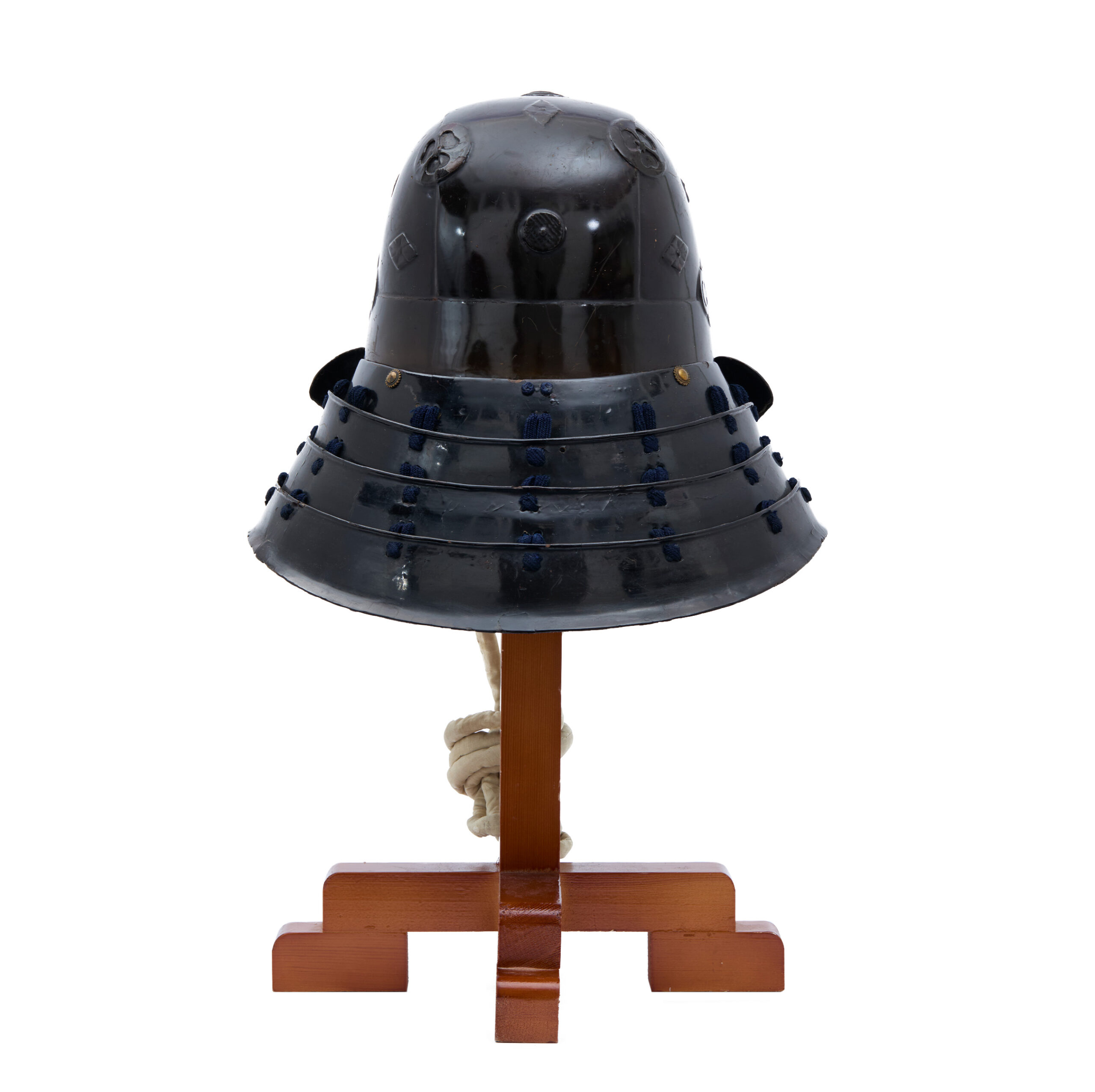
The front crest (前立て, maedate) on this kabuto features the Tomoe-mon (巴紋), one of Japan’s oldest and most iconic traditional motifs.
The Tomoe design dates back as far as the Jomon period, and can be seen in archaeological sites from ancient Japan. While this crest resembles a drum, it is also associated with the drums carried on the back of Raijin, the god of thunder, and symbolizes thunder, natural forces, and divine power.
The Tomoe-mon is among the earliest family crests in Japanese history and has been widely used not only by noble and samurai families, but also by Shinto shrines and Buddhist temples as sacred emblems. There are many variations, including Mitsu-domoe (threefold Tomoe), Left- and Right-facing Tomoe, paired Tomoe, cloud-shaped Tomoe, and layered Tomoe. The swirling shape of the Tomoe is often interpreted as a symbol of flowing water, the cycle of energy, or the balance of yin and yang. It has long been regarded as a protective motif, believed to offer purification, strength, and victory in battle, making it a deeply rooted symbol in Japanese culture and spirituality.
In addition to the Tomoe crest, the main body of the helmet features a variety of traditional Japanese motifs, including plum blossoms. These decorative details invite viewers to appreciate the craftsmanship and aesthetic beauty throughout the piece.
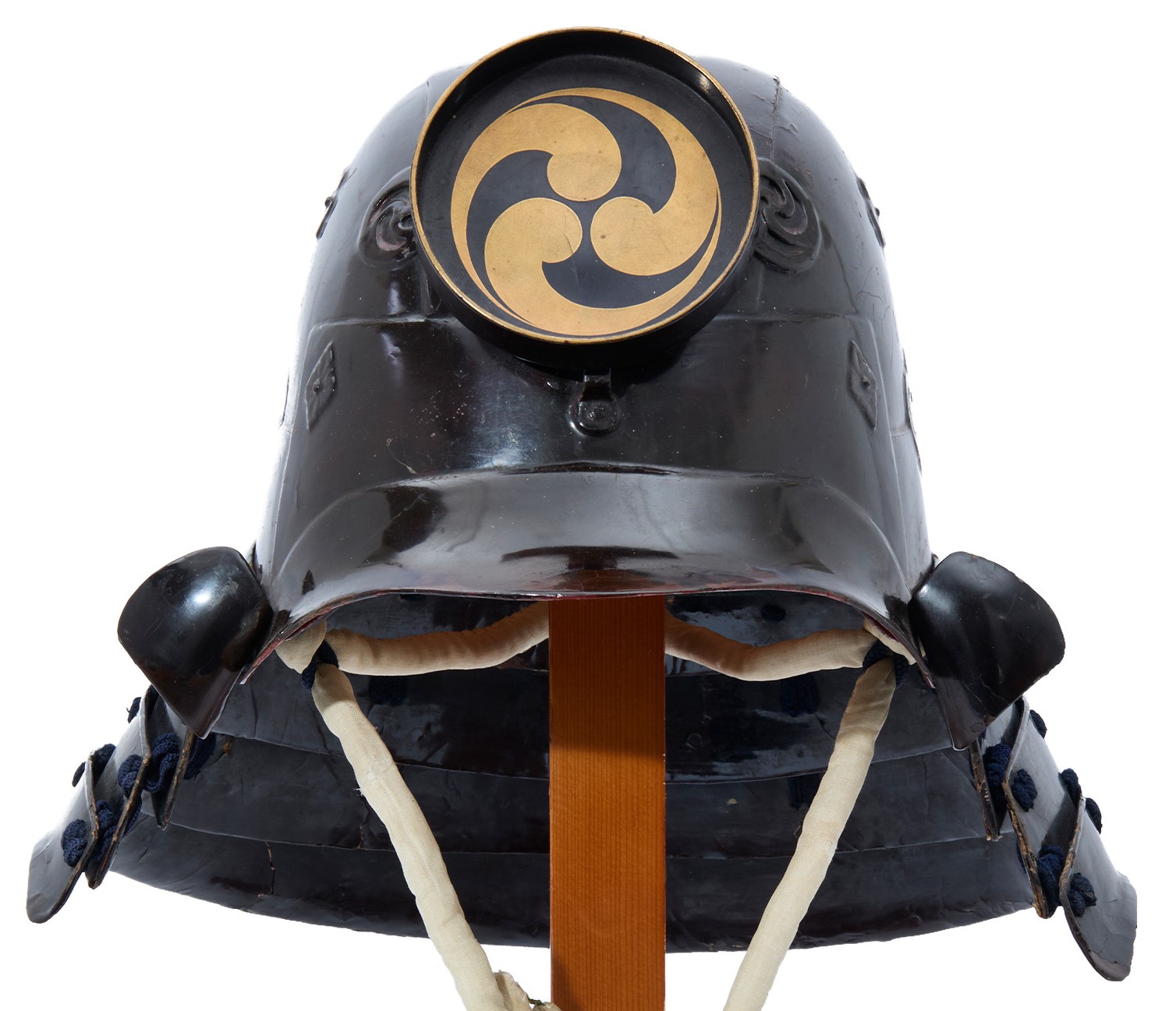
Certification:Tokubetsu Kicho Shiryo Certificate
The certificate was issued by The Association for the Research and Preservation of Japanese Helmets and Armor, which is the most trusted Japanese armor appraiser in Japan. Tokubestu Kicho Shiryo means special rare article. It is ranked as the third highest of five rankings.
This helmet was authenticated on May 11th 2025 as a Tokubetsu Kicho Shiryo and the paper mentions the helmet was made in the Early Edo period. The purchaser will receive the original certificate as well. We can also translate what is written into English and make a PDF file for your record if you request.
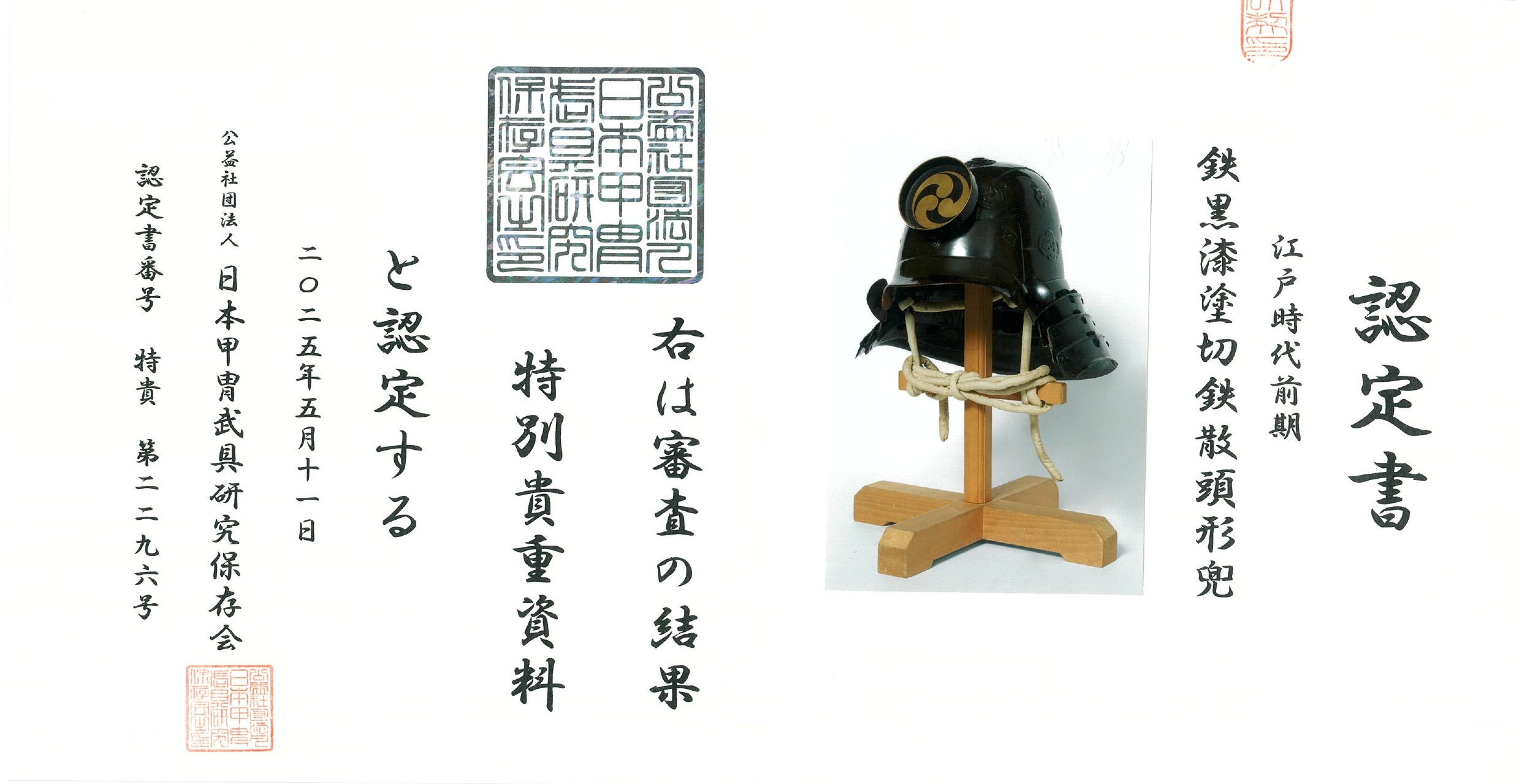
An English translation of the certificate is available on request. We won’t charge any additional fee.
【About us】
Samurai Museum is located in Tokyo, Japan, exhibiting antique artifacts related to the Samurai history. Samurai Museum Shop is the place for those who are interested in Japanese culture and craftsmanship. We deal with antique Samurai swords/armor, traditional crafts made in Japan and so on.
【Antique Japanese helmet (Kabuto) and Export process】
After receiving the full payment from you, we will apply for its export permit from the Board of Education to legally export the helmet to other countries. It normally takes around 2-4 weeks to receive this permit. And we would like you to expect at least 1.0-1.5 months for your order to arrive at your given address after you ordered.
【Payment Method】
We accept payment through Stripe (Credit card), PayPal, Apple Pay or ChromePay, all of which are secure payment methods. Also, you don’t need to make an account on Stripe for the checkout. If you prefer other payment method, please contact us. After confirming your payment, we will apply for an export permit. You may either pay in JPY, USD, AUD, CAD, EUR, CHF or GBP. The price is set in Japanese Yen. Prices in other currencies are automatically calculated based on the latest exchange rate.

【Shipping Duration】
We ship via EMS (Japanese Postal Service). It normally takes at least 5-14 days to receive any packages after you place an order. It might take longer depending on the season or custom clearance. We will inform your order’s tracking number via email.
*Please keep in mind there is possible delay expected in delivery with EMS in some countries due to the pandemic in the world. We offer free shipping only when we can ship by EMS.
【How to make sure the condition】
Please keep in mind that what you are going to purchase is an antique item. We uploaded high resolution photos for you to check its condition thoroughly. If you like to see more photos with different angles, please feel free to contact us. We will be happy to send them to you so that you can make informed decision. It is essential for us to know that you are happy with your choice of a sword. and we are prepared to use the best of our ability to serve you.
【How To Contact Us】
Please contact us through email, Facebook Messenger or Live Chat if you have any questions. You can find each icon on the right side of the website. Please click one of them to reach us. We will reply to you within 1-2 business days.
【How To Preserve Antique Samurai Armor/Helmets】
Dryness, humidity, and bad ventilation might deteriorate the condition of antique Samurai armor/helmet. The best temperature to preserve Samurai armor/helmet is around 20℃ in Celsius, and humidity should be about 60%. Direct sunlight should be avoided. We recommend storing armors/helmets in a room with good ventilation. If you like to display them outside the boxes for a prolonged time, we suggest using a glass case in order for dust not to be accumulated easily. In case you don’t use a glass case, please make sure to regularly dust off from the armor/helmets by using a soft brush made of delicate cloth or brush for painting.
If you like to know more about the preservation of this armor, please feel free to contact us.
